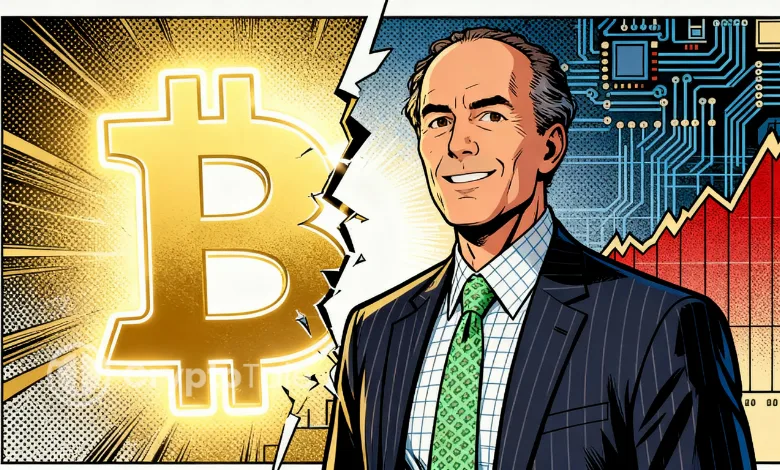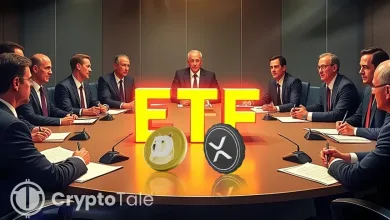VanEck CEO Flags Rising Bitcoin Risks in Encryption and Privacy

- VanEck CEO raises new doubts on Bitcoin privacy and cryptographic power today.
- Quantum progress renews fears about how Bitcoin will withstand future threats.
- Zcash draws attention as privacy tools spark increased interest in the sector.
Bitcoin’s long-term design came under renewed pressure on Friday as VanEck CEO Jan van Eck questioned whether the network still provides enough encryption and privacy during an interview on CNBC’s “Power Lunch” with anchor Brian Sullivan. Van Eck said concerns inside the Bitcoin community extend far beyond short-term market swings.
They also revolve around deeper questions tied to cryptographic strength, quantum threats, and the transparent nature of Bitcoin transactions. He repeated that VanEck would walk away from Bitcoin if it believes the cryptocurrency’s foundational thesis no longer holds.
Concerns Around Encryption and Quantum Threats Grow
Van Eck CEO told CNBC that something larger is moving inside the Bitcoin community and that non-crypto audiences should understand these concerns. He stated that VanEck’s long history in financial markets gives the firm a wide perspective on whether Bitcoin’s technological foundations remain strong.
He pointed to encryption strength and quantum resistance as central issues. He said the Bitcoin thesis depends on robust cryptography and readiness for future advances. He added that rising quantum computing capabilities could shape long-term decisions, including whether Bitcoin can maintain its security guarantee.
Additionally, he noted that some Bitcoin holders are exploring alternatives. He mentioned Zcash as a reference point because it offers stronger privacy features and uses different methods to protect transaction data. His comments followed increased industry discussion about encryption durability and the speed of quantum hardware progress.
Bitcoin Privacy Model Faces New Debate
Jan questioned whether Bitcoin’s privacy model still meets the expectations of many users. He noted that Bitcoin’s transparent ledger allows observers to watch funds move across addresses. He said this transparency can conflict with rising demands for confidentiality.
He added that some longtime Bitcoin supporters and self-described maxis have begun examining Zcash because it delivers stronger privacy protections. He said this shift reflects broader concerns about visibility on public blockchains.
This debate comes as other experts also raise concerns tied to cryptographic futures. At Devconnect in Argentina, Ethereum co-founder Vitalik Buterin said, “Elliptic curves are going to die,” referring to the mathematical tools that underpin Bitcoin and Ethereum.
Related: Kiyosaki Sells $2.25M in Bitcoin, Redirects Funds to New Businesses
Industry Voices and Rising Technical Warnings
Additionally, quantum researcher Scott Aaronson wrote on November 13 that rapid hardware progress makes it “a live possibility” that a fault-tolerant quantum computer capable of running Shor’s algorithm could arrive before the 2028 U.S. election. That algorithm could break widely used cryptographic systems, prompting more urgency in blockchain discussions.
Yet not everyone agrees with van Eck’s assessment. Samson Mow, CEO of JAN3 and a prominent Bitcoin advocate, rejected the idea that Bitcoin maxis are shifting to privacy-focused alternatives. He challenged Van Eck’s claims on X and questioned whether he should speak on Bitcoin issues.
Van Eck later posted a summary on X saying that the current Bitcoin downturn reflects halving cycle dynamics, quantum-related encryption concerns, and Zcash’s stronger privacy model. He also shared advice from VanEck portfolio manager Pranav Kanade, who encouraged dollar-cost averaging during bear markets.
As the conversation shifts toward 2026, one question now hangs over the market: Can Bitcoin’s architecture keep pace with rising expectations around privacy and cryptographic security?





